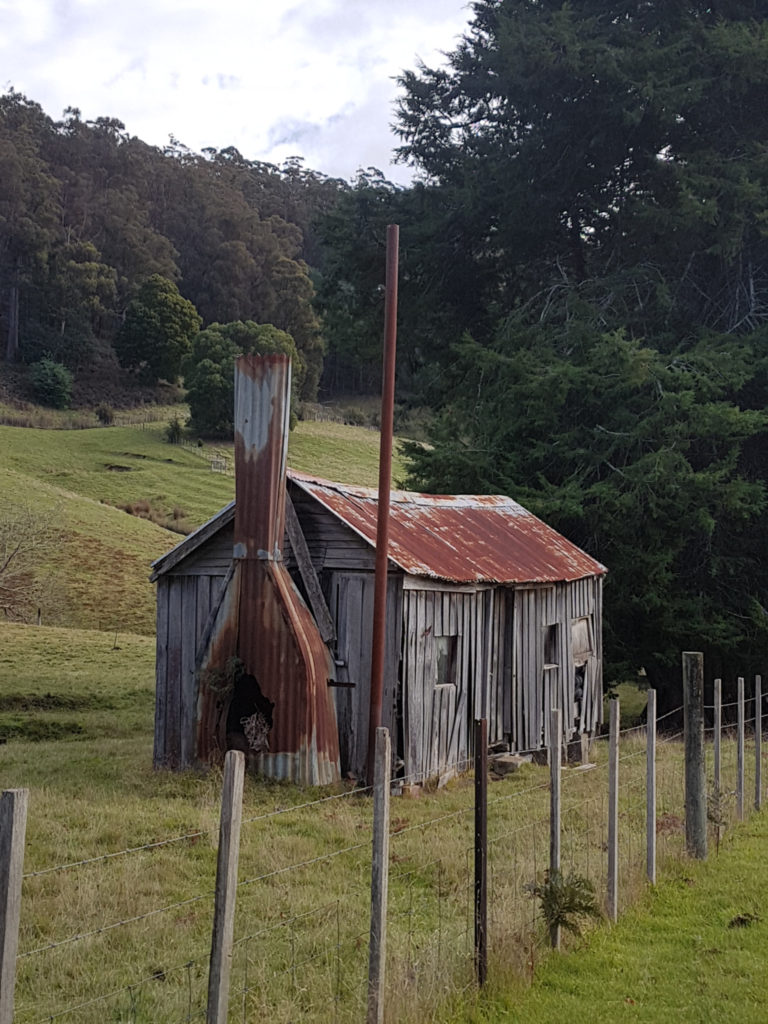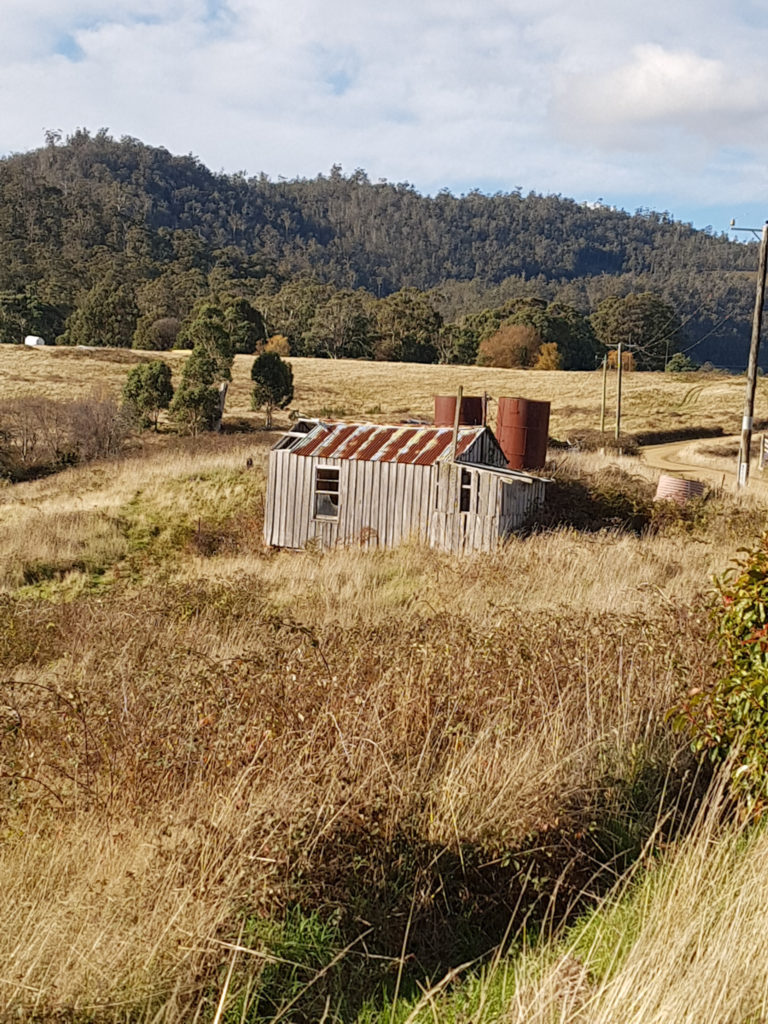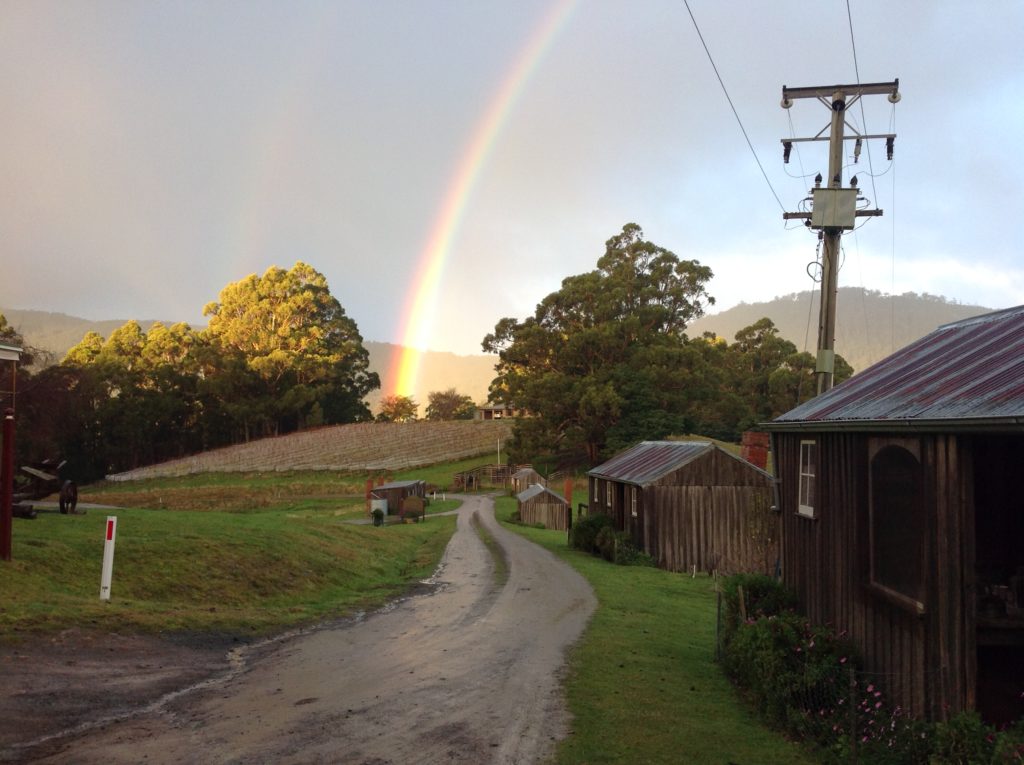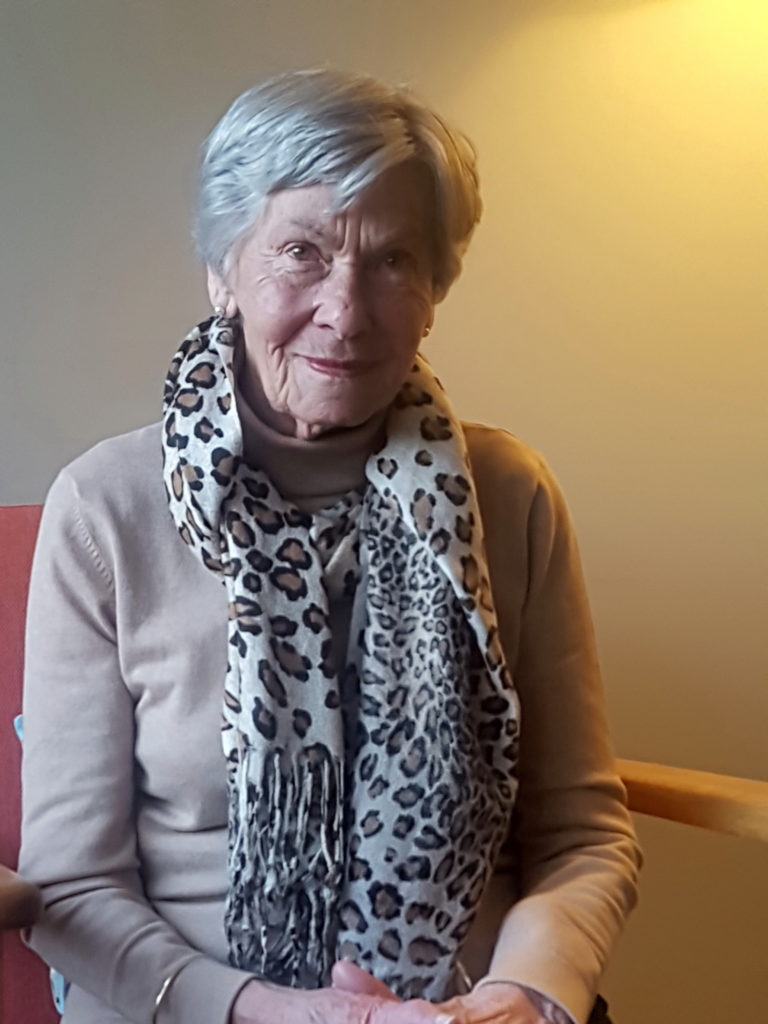Driving along the many small back roads in the Huon Valley, you will often spot a tiny house, or even a “street” of them. Seldom will these be in sufficiently good nick to be confused with the tiny houses that are right on trend; these are the pickers huts.
Decades ago, whole families would live in them over summer when berries were ripe. Others were occupied in autumn, when apple and hop pickers went to work.
Today, at least in the time of open borders, pickers are more likely to be from South Korea or France than they are to be locals. But in the early decades of last century, the families who occupied the huts all summer might have moved only 20 kilometres from their permanent home. Close, but too far to walk back and forth each day.
At Hartzview Vineyard, just outside Cygnet, is a “street” of seven huts you can visit. Number 2 is named Rosa Large’s Hut. Rosa, is 85 now and lives in Hobart. She spent the summer of 1948 living in the hut with her mother and five siblings. The kids piled into the back of their dad’s lorry for the drive down from Hobart. Her dad stayed a couple of weeks, then went back to Hobart to work. Then on Fridays, he would return, bringing the family most of the supplies that would see them through the next week. But bread and milk were delivered each day. The baker would deliver about 70 loaves a bread a week to the 13 huts then on the farm.
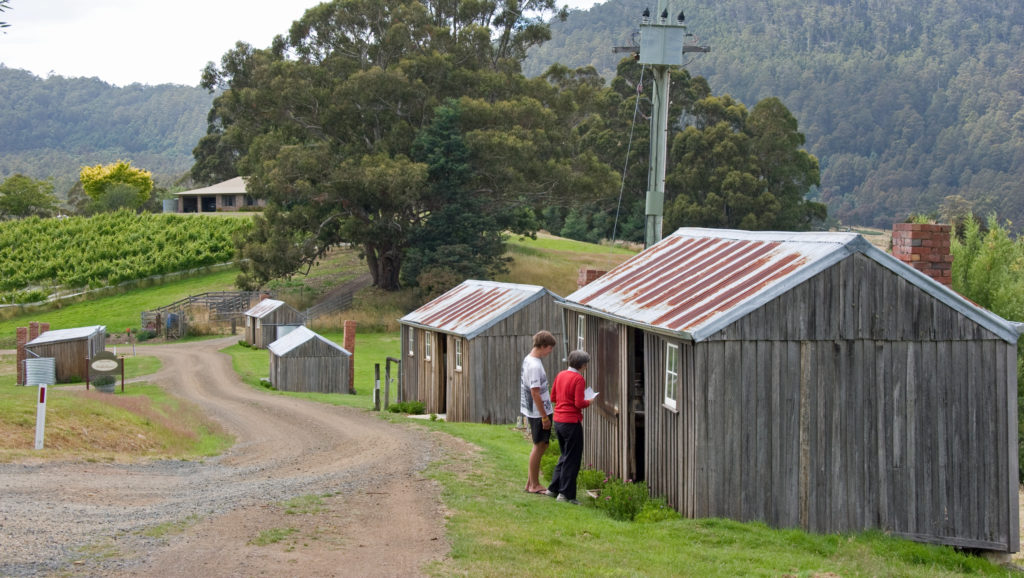
Rosa’s hut has a central door that opens into a small room with an open fireplace. To the left and right, are small rooms with two pairs of bunks in each one. Hard wooden slats are the base of the bunks and Rosa remembers the “mattresses” supplied were “absolutely awful, full of just strawy stuff; it prickled you”. But the lasting memory was of a “lovely holiday”.
Her second sister would stay at the hut to look after the youngest two children, and the rest would go to the raspberry patch. She remembers lots of fun. “Other kids might kill a snake and chase you with it,” she said. “And we all sat around the bonfire at night. On Saturday nights, I would mind the children and Dad and Mum would go to the dance at Cygnet.” (A seventh child was born that following year.)
Because her father’s uncles owned the farm (Rosa was a Polley then), the family was allowed to go to the big house once a week for a bath and to use the big copper to do their laundry. Rosa does not remember how the other families managed these functions, but remembers “there was always washing hanging around somewhere”.
Restoration know-how
The first of the Hartzview huts were built in the 1920s by the original owners Les and Lillian Polley, who cleared the land and planted raspberries, gooseberries, strawberries and blackcurrants. Huts on the other side of the road were built in the 1940s.
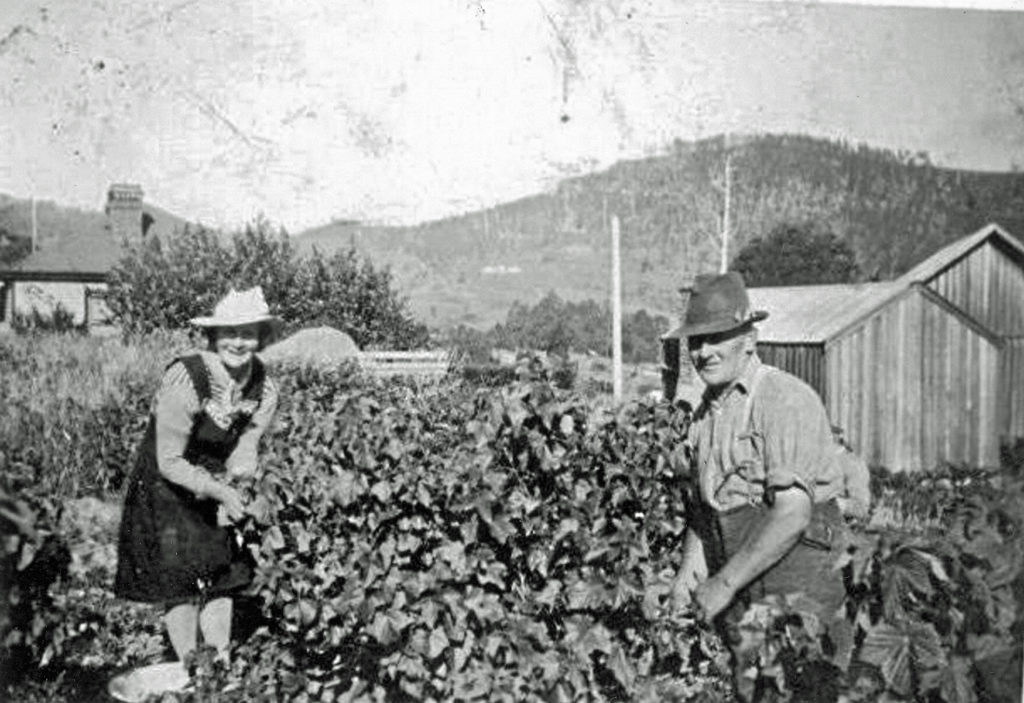
When Rob and Anthea Patterson bought the property in 1976 the seven huts still on the farm were in poor shape. “We were conscious that we were in danger of losing something really significant,” said Anthea. “They represented a way of life that was being lost.”
Once they got their vineyard going, they gained heritage listing for the huts, and later a grant to restore them. Local builder Greg Edwards did the work. He cut eucalypt saplings on a hill behind the property for the framing of the older buildings and they scavenged floorboards and planks from farm outbuildings for the huts of the 1940s.
One day, some builders were wondering how to get a new bearer underneath a hut to support the floorboards that were sitting on stone piers. Murray Turnbull, who had worked on the farm as a child, turned up to say hello to one of the builders. They explained the problem. “Got a crowbar” he asked. The end of the bearer was oiled a bit, the walls levered up with the crow bar, and the bearer tapped into place – just the way it had been done in the past.
Now, you can pick up a leaflet and look in all the huts, including one dedicated to Italian prisoners of war who worked there during World War II. And as well as the wine from pinot noir grapes grown on the property, you can taste fruit ports and liqueurs that hark back to the days when small fruits were the crop.
A village of huts
In Ranelagh, near Huonville, there was a much bigger assembly of huts. Mike Raine supplied the picture of them taken soon after his family moved to Kellaway Street in the 1980s. At that time the Raine house was surrounded by orchards on land mostly owned by the Frankcomb family.
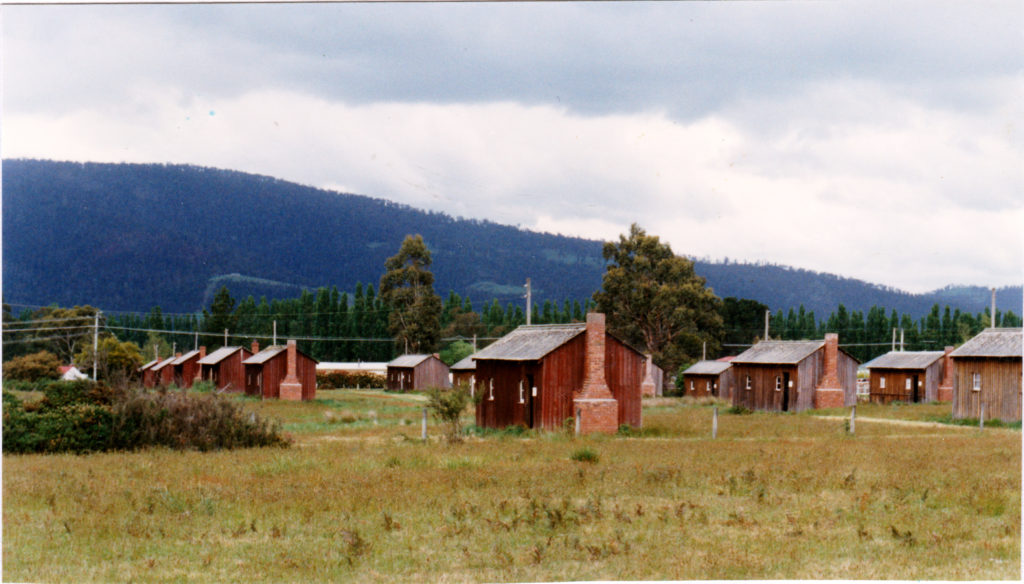
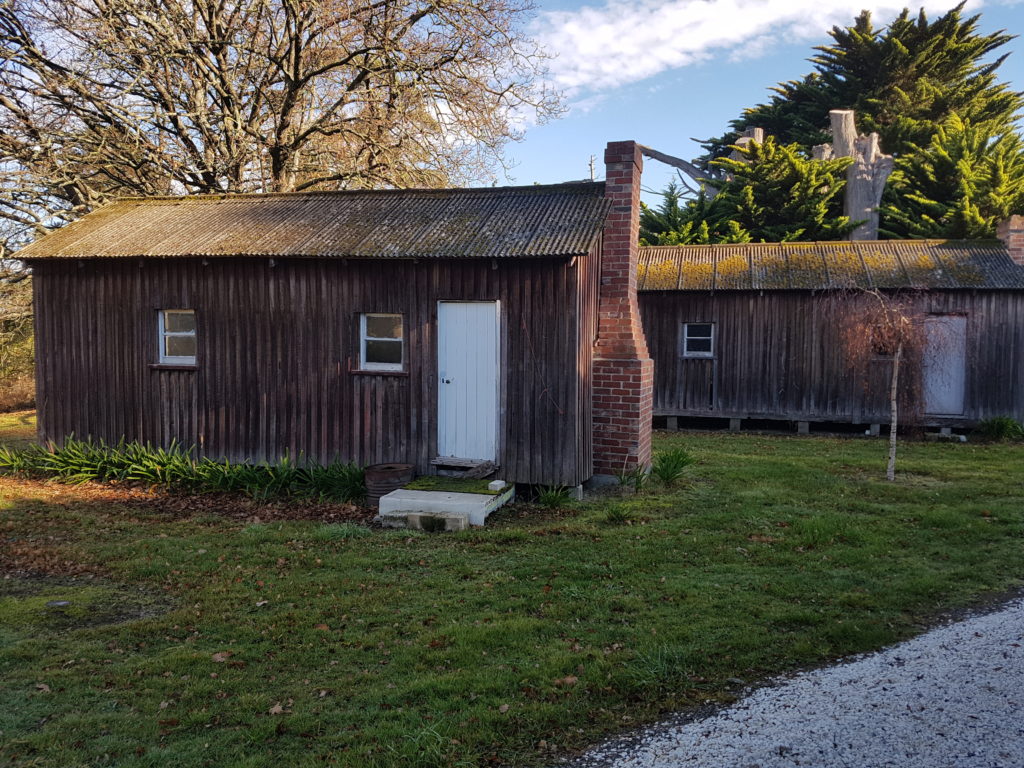
When, at the beginning of the 1990s, these huts in Bailey Street were sold off, two were reassembled in the grounds of the original Frankcomb family home, Clifton Estate. One is numbered 72, indicating how many there were. You can see them from the road opposite the Anglican church in Louisa St, or when the estate is open to the public.
Others of these huts have been moved to the coast as a holiday shacks, while others are disguised as sheds or carports. One woman told me she had attached a hut to the side of her house, where it now serves as her kitchen.
Long walk home
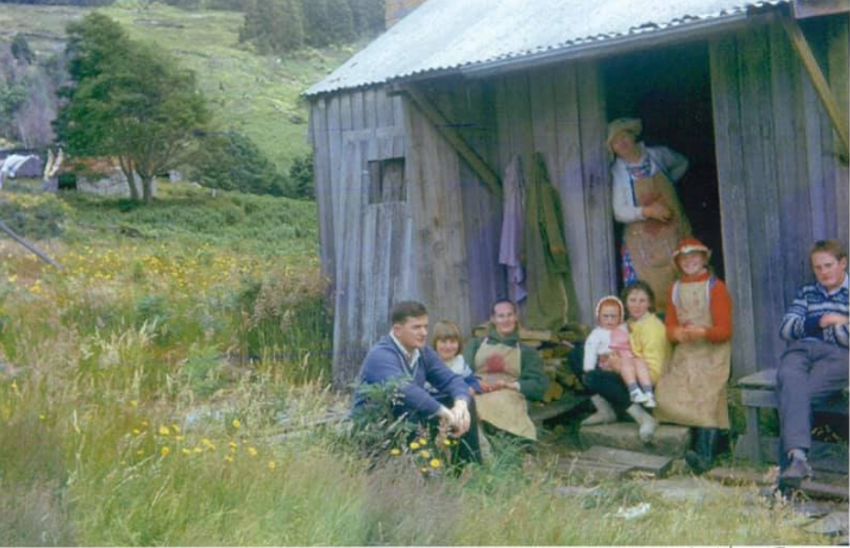
Winsome Duggan, the girl in the orange dress under her sack apron in this 1963 photo, remembers her family (she was the youngest of 11) would get a ride on a truck from their home to the hut on Monday mornings with their supplies for the week. Then on Saturday evening they would take about an hour and a half to walk to their home in Glen Huon. On Sunday, they would go to church, have baths, do the laundry head back on the truck on Monday morning.
During the week, they could rinse off in the dam “leaping over the snakes” to get to it.
Over the eight years she picked raspberries at Dickensons Creek Road, Winsome would start at daybreak and work through the heat. She wore a “pickers pocket”. These would be emptied into old “kero” tins, which were weighed in at 5pm every day. The fruit was going to the IXL jam factory in Hobart, so it didn’t matter that it got a bit squashed.
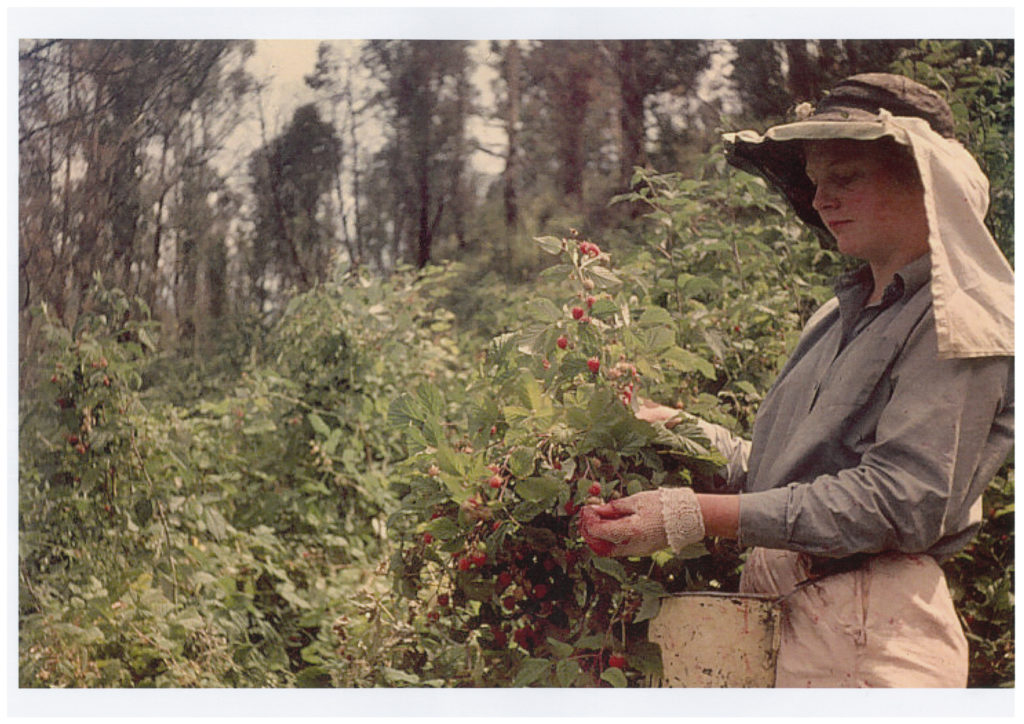
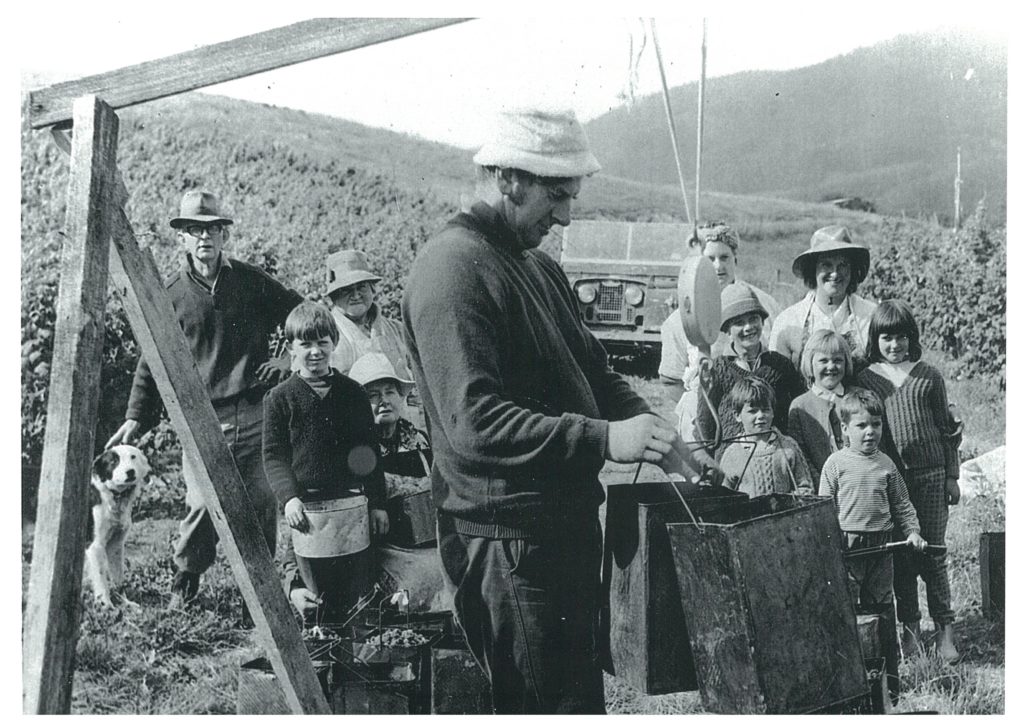
Then they would stop for tea. “Mum would make damper in a big camp oven. We had mainly potatoes, because they were growing amongst the raspberries, and vegetables. We might have chicken sometimes, Milo, a biscuit now and then.”
And then it was back to work until it was too dark to see, which might be as late as 9pm in high summer.
Winsome said she was the only one in her family who enjoyed the work. “My brother Stacy (far right in the Duggan family picture above) used to say when he grew up he would be a pilot and then he would a bomb every raspberry field.”
Hard as the work may have been, Anthea at Hartzview says every person she has spoken to who had experienced hut life remembers them with fondness.

